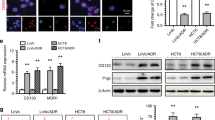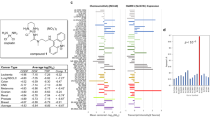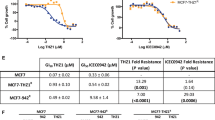Abstract
Multidrug resistance (MDR) in tumour cells is often caused by the overexpression of the plasma membrane drug transporter P-glycoprotein (P-gp) or the recently discovered multidrug resistance-associated protein (MRP). In this study we investigated the specificity and sensitivity of the fluorescent probes rhodamine 123 (R123), daunorubicin (DNR) and calcein acetoxymethyl ester (calcein-AM) in order to detect the function of the drug transporters P-gp and MRP, using flow cytometry. The effects of modulators on the accumulation and retention of these probes were compared in several pairs of sensitive and P-gp- as well as MRP-overexpressing cell lines. R123, in combination with the modulator PSC833, provided the most sensitive test for detecting P-gp-mediated resistance. Moreover, in a 60 min drug accumulation assay R123 can be regarded as a P-gp-specific probe, since R123 is not very efficiently effluxed by MRP. In contrast to R123, a 60 min DNR or calcein-AM accumulation test could be used to detect MRP-mediated resistance. The MRP-specific modulator genistein could be used in combination with DNR, but not with calcein-AM. Vincristine (VCR) can be used to increase the cellular uptake of calcein-AM in MDR cells, but is not specific for MRP. Thus, although the combination of DNR with genistein appeared to be as sensitive as the combination of calcein-AM with VCR, the former may be used to probe specific MRP activity whereas the latter provides a combined (P-gp + MRP) functional MDR parameter. With these functional assays the role and relative importance of P-gp and MRP can be studied in, for example, haematological malignancies.
This is a preview of subscription content, access via your institution
Access options
Subscribe to this journal
Receive 24 print issues and online access
$259.00 per year
only $10.79 per issue
Buy this article
- Purchase on Springer Link
- Instant access to full article PDF
Prices may be subject to local taxes which are calculated during checkout
Similar content being viewed by others
Author information
Authors and Affiliations
Rights and permissions
About this article
Cite this article
Feller, N., Kuiper, C., Lankelma, J. et al. Functional detection of MDR1/P170 and MRP/P190-mediated multidrug resistance in tumour cells by flow cytometry. Br J Cancer 72, 543–549 (1995). https://doi.org/10.1038/bjc.1995.371
Issue Date:
DOI: https://doi.org/10.1038/bjc.1995.371
This article is cited by
-
Gut microbiota regulation of P-glycoprotein in the intestinal epithelium in maintenance of homeostasis
Microbiome (2021)
-
Effects of P-Glycoprotein on Steroid-Induced Osteonecrosis of the Femoral Head
Calcified Tissue International (2010)
-
Stimulation of non-Hodgkin's lymphoma via HVEM: an alternate and safe way to increase Fas-induced apoptosis and improve tumor immunogenicity
Leukemia (2003)
-
Functional characterization of minimal residual disease for P-glycoprotein and multidrug resistance protein activity in acute myeloid leukemia
Leukemia (2001)
-
BIRICODAR (VX-710; Incel™): an effective chemosensitizer in neuroblastoma
British Journal of Cancer (1999)



